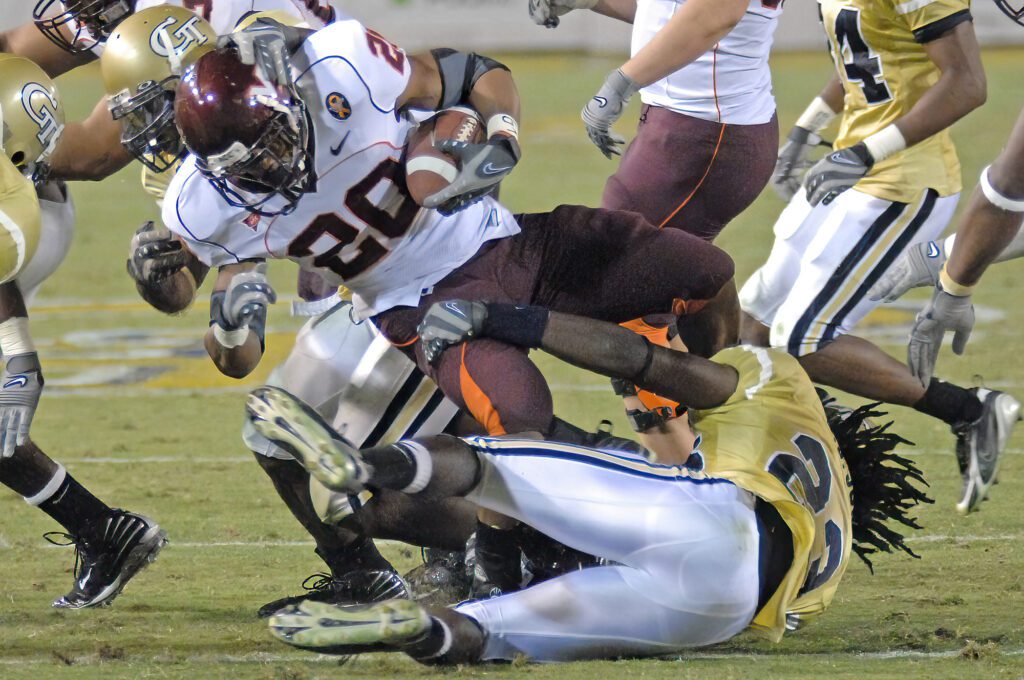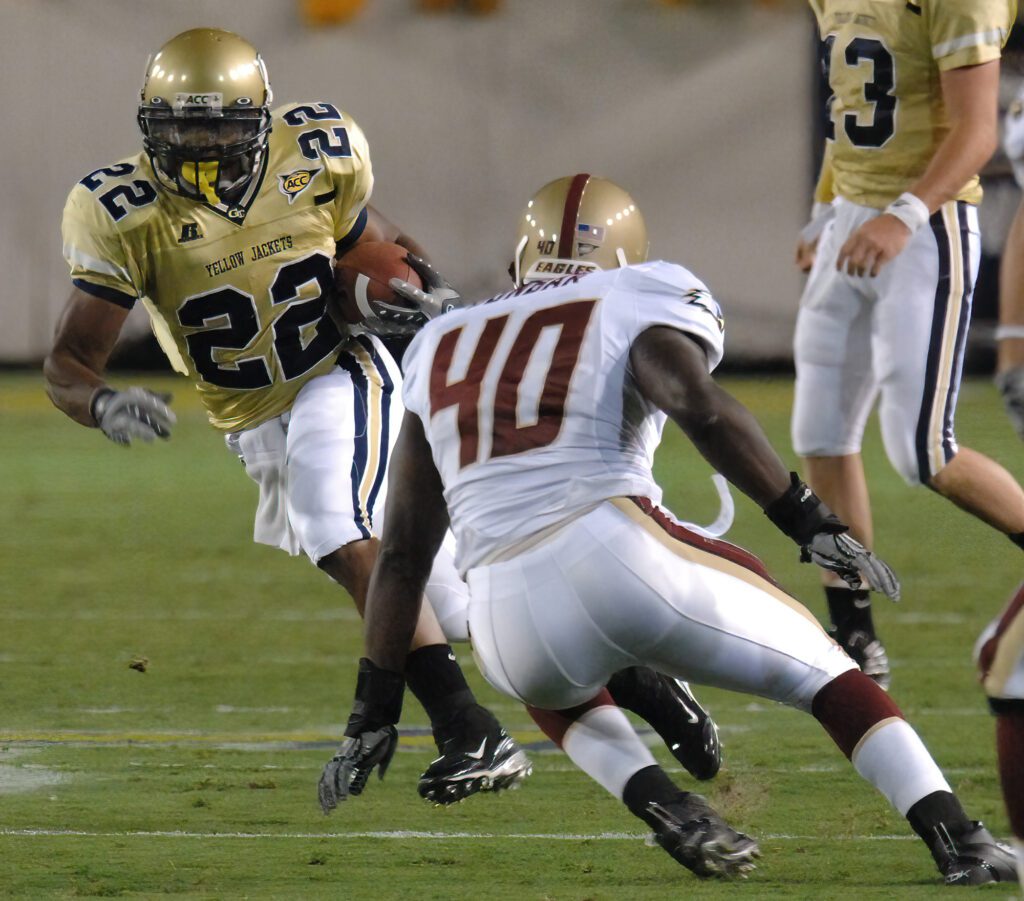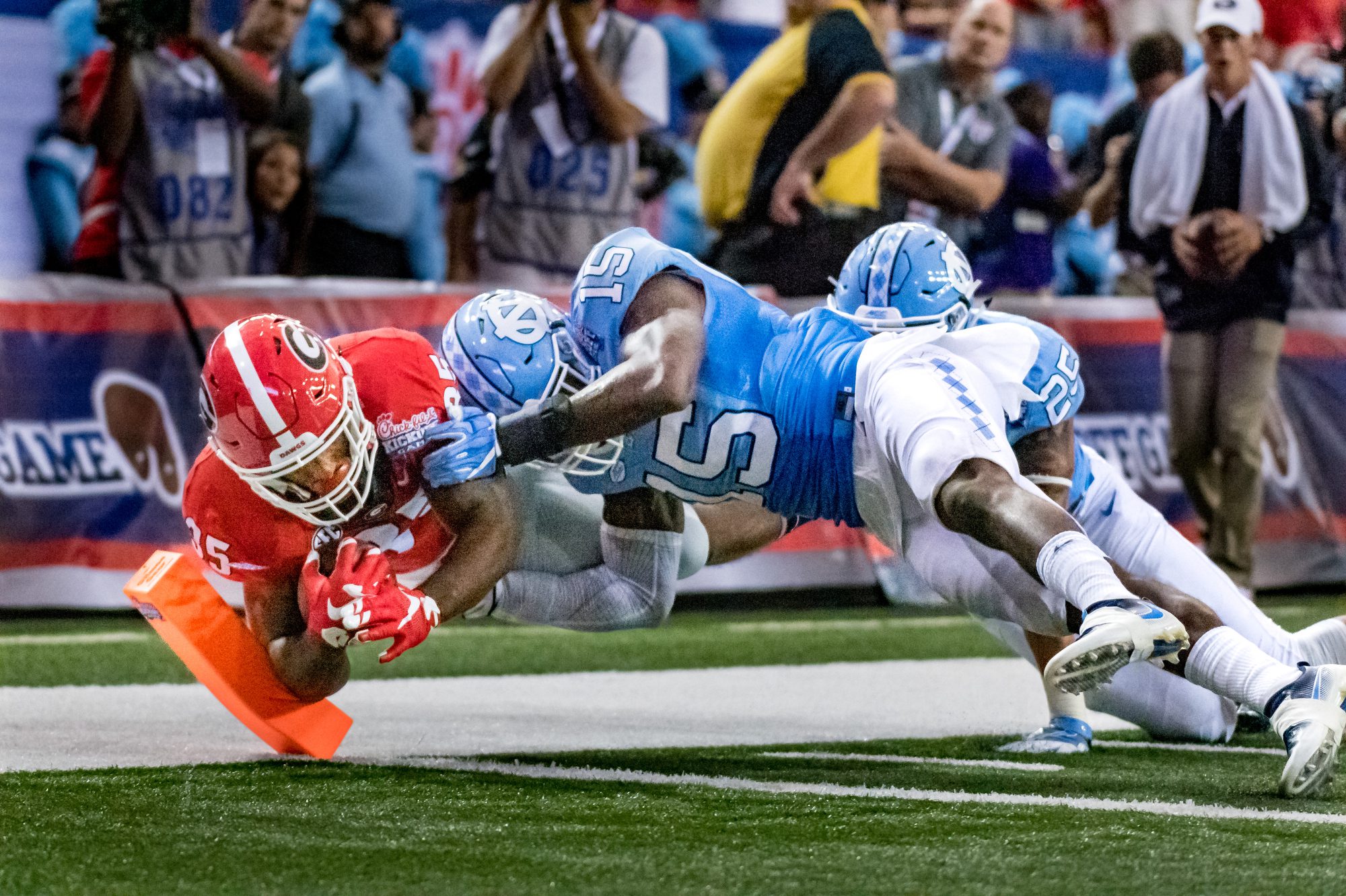First, when covering a football game, I like to stand behind the end zone, so the team I’m focusing on is facing me. That way, I am already where they are trying to go.
You can get two types of photos of a team from this vantage point — defense and offense. The great thing is you can see the players’ faces, which for me is very important.

In sports with a ball, I am typically looking for three things: (1) peak action, (2) the ball, and (3) competition. Sometimes you can’t get all three in a picture, but if one element stands out, the photo will still work.

After one team is ahead in a game, I often begin to focus on the other team to see if there is a play that changes the whole game. Of course, this can happen at any moment when the game is close. However, with a blowout, the latter part of the game is harder to cover since not much will happen to change the outcome of the game.
After you shoot a game, it’s essential not to editorialize in your captions — but to provide concise descriptions of what’s taken place. Concise but chock-full of information.
Today, databases require writing captions so the software can pick keywords from the caption so that editors can find the photos. One thing to remember, for example, is to list both teams in the caption. This way, you are informing the editor. In addition, it is common for editors to search for a few photos and then put them in a folder, and well-written captions help them with the necessary information.

Getting a significant moment in the camera is only part of the story; it is the caption that fills in the rest.
A final note about the picture above; like all of these, it’s taken at night, which is a bit more complicated. But it communicates all three elements: He’s carrying the ball, it contains peak action, and you can sense the competitive pressure he probably feels from the defensive player pursuing him.

